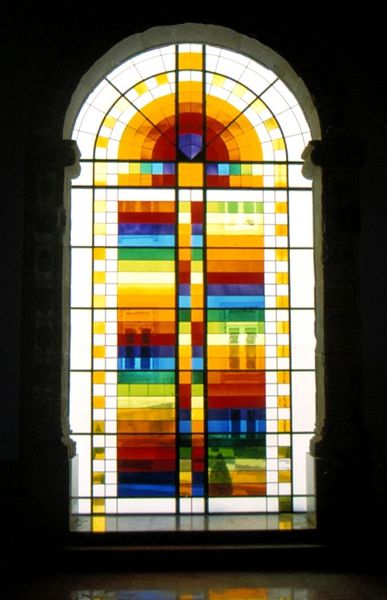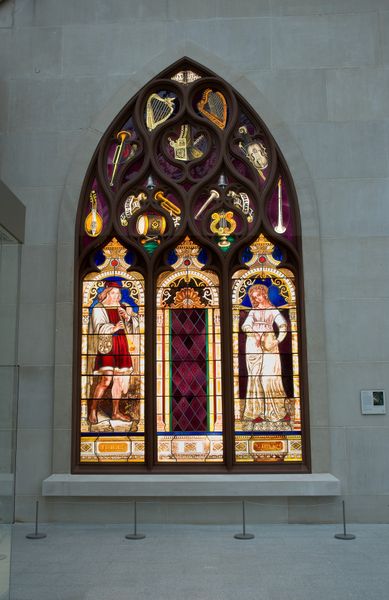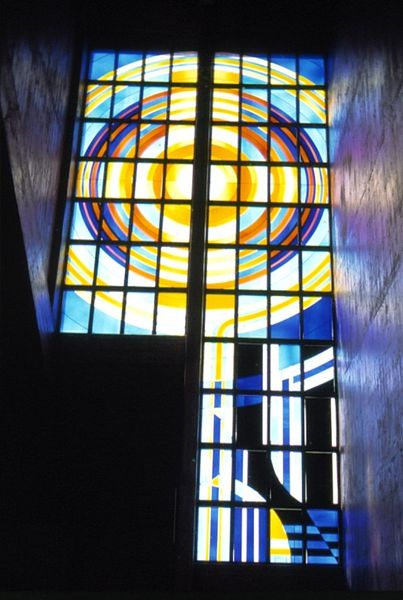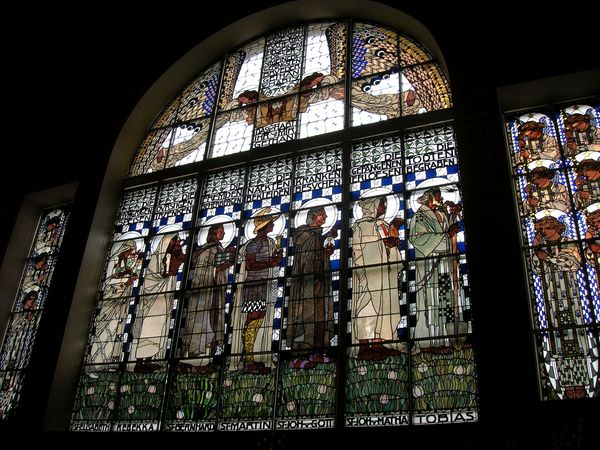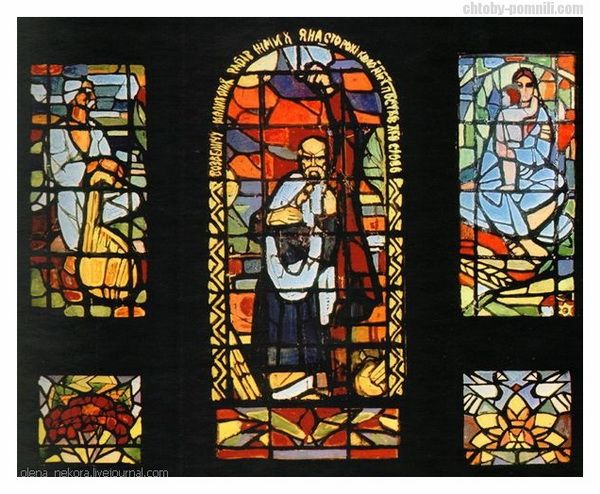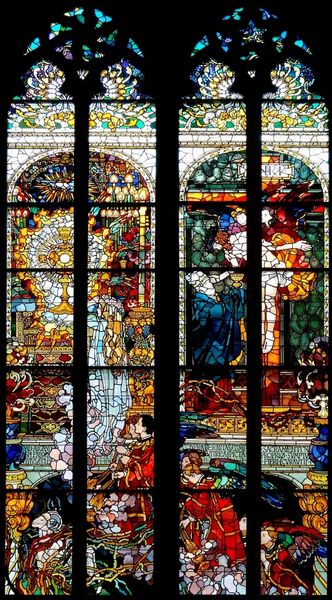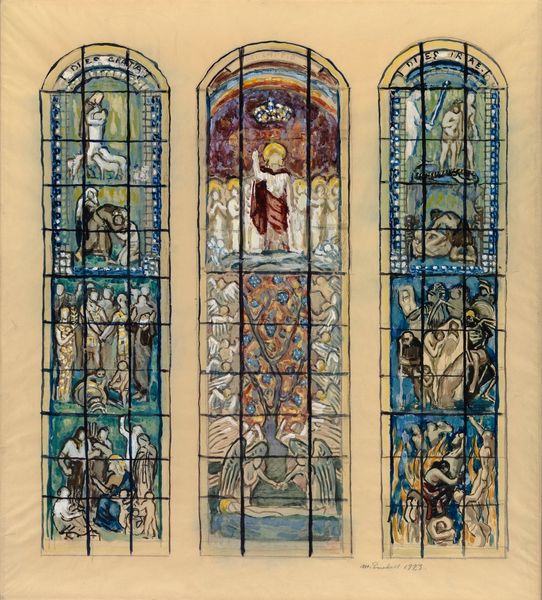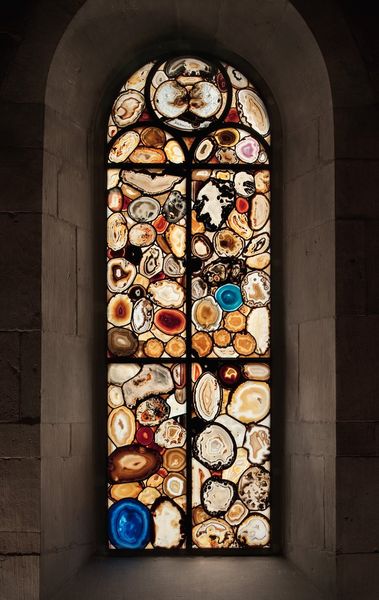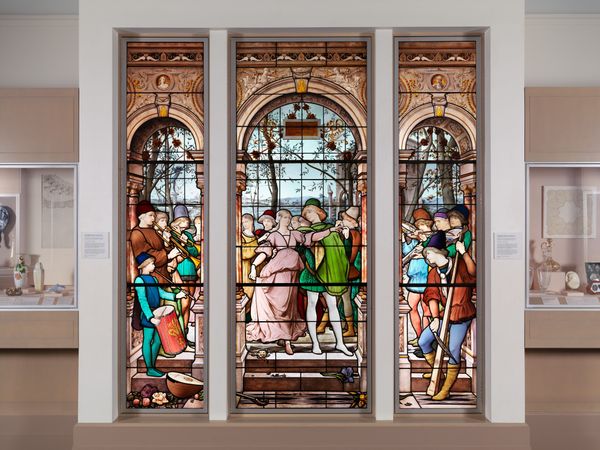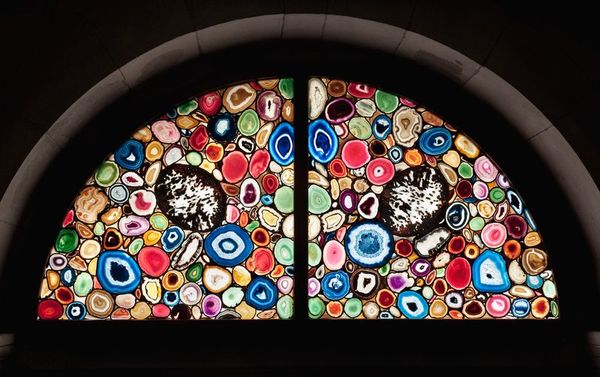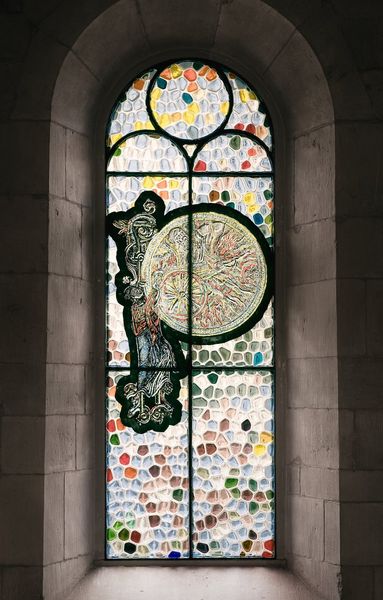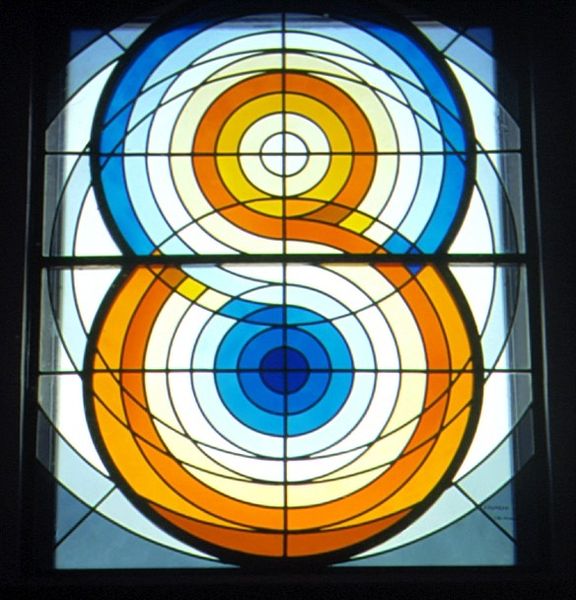
mixed-media, glass, mural
#
mixed-media
#
narrative-art
#
figuration
#
mural art
#
glass
#
history-painting
#
mural
Copyright: Afewerk Tekle,Fair Use
Editor: Right, so this massive mixed-media mural by Afewerk Tekle is titled "The Total Liberation of Africa". It completely dominates the space with its vibrant colors and imposing scale, a very monumental tribute, I would say! The most fascinating aspect is how it uses glass. How do you see this piece, considering its form and message? Curator: For me, the stained glass, a material typically associated with European cathedrals and religious iconography, takes on a radically different significance here. Its use directly addresses the colonial context. The means of production—the choice of glass, its acquisition, the labor involved in its construction—all speak to the complex relationship between Africa and the West. How was the glass sourced, who were the artisans involved, what skills and techniques were privileged in its making? These are crucial questions. Editor: That’s a perspective I hadn’t fully considered. So, instead of just admiring the aesthetic or the narrative, we should be digging deeper into the logistics and cultural exchange behind its creation? Curator: Precisely! The labor, the materials, and the mode of display itself are not neutral. Considering this was named 'The Total Liberation of Africa', we should consider how resources or means of making also had to be liberated. How does Tekle repurpose the tools and symbols of colonial power to assert African agency and self-determination? Think about who would usually make stained glass in such large proportions, and what materials would have been used and where they would be found. The glass itself carries a history of trade, power, and exchange. Editor: So it is about the statement, but just as much about HOW that statement came to be. I’ll definitely look into the history of glassmaking and trade in Africa. Thanks for broadening my view. Curator: Absolutely. And, for you to take away; considering its method of fabrication and where it may have been displayed in society gives this artwork even more voices in its meaning.
Comments
No comments
Be the first to comment and join the conversation on the ultimate creative platform.

